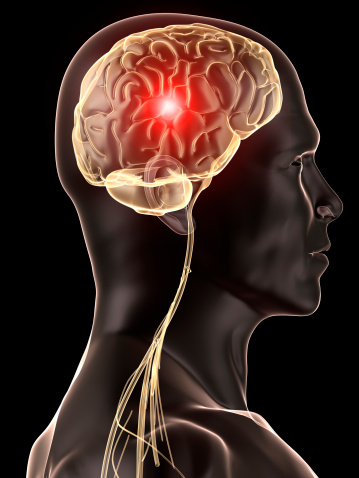
For quite some time, expert scientists have suspected that frequent exposure to ultraviolet radiation has the potential to become addictive, but new research actually confirms what is going on inside the brains of people as they lay in tanning beds.
Despite public warnings about skin cancer, tanning remains as popular as ever, with nearly 30 million Americans tanning indoors every year, and more than a million visiting tanning salons on an average day. Frequent users say they simply enjoy the way they look with darker skin.
Non-melanoma skin cancer can be disfiguring and sometimes life-threatening, and melanoma, the deadliest form of skin cancer, will kill an estimated 8,790 people in the US this year alone.

What the researchers found was that several parts of the brain that play a role in addiction were activated when the subjects were exposed to UV rays.
The findings, which appear in the Journal of Addiction Biology, may help explain why some people continue to tan often despite awareness about risks such as skin cancer, premature aging, and wrinkles.
Frequent tanning trains the brain to respond to UV light, in areas that are associated with reward. These areas, particularly the striatum, are the same areas activated when someone is administered a drug or a high-value food like sugar.

The study recruited a small group of people from tanning salons who said that they liked to tan at least three times a week and that maintaining a tan was important to them.
The frequent tanners agreed to be injected with a radioisotope that allowed researchers to monitor how tanning affected their brain activity.
On one occasion, the study subjects experienced a normal tanning session. But on another occasion, the researchers used a special filter that blocked only the UV light, although the tanners weren't told of the change.
Brain images later showed that during regular tanning sessions, when the study subjects were exposed to UV rays, several key areas of the brain lighted up.
Among those areas were the dorsal striatum, the left anterior insula, and part of the orbitofrontal cortex – all areas that have been implicated in addiction. But when the UV light was filtered out, those areas of the brain showed far less activity.

The tanners, questioned after each session, expressed less desire to tan after the real sessions, indicating they had gotten their fill.
But on days when the tanners were unknowingly deprived of the UV rays, their desire to tan after the session remained as high as it was before the session began.
Subjects all liked the session where they got the real UV light. Interestingly, there was some way people were able to tell when they were getting the real UV light and when they were not.
The research suggests that some people appear addicted to tanning, a finding bolstered by the fact that many longtime tanners have a difficult time stopping or even just cutting back on tanning sessions. He said the research was inspired by a colleague, based on her experiences with dermatology patients.
Did you know that the UV nail lamps found in almost all nail salons and sold widely for use at home, (in a sense, like miniature tanning beds) emit similar amounts of UV radiation per square meter?
Like tanning beds, they emit predominantly UVA rays, which penetrate the skin to the greatest degree.
Sources: webMD.com, droz.com, skincancer.org, fda.gov
